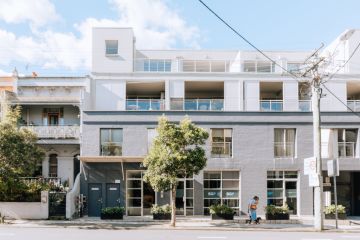Are you making the most of your rental property?

Evaluating your rental property’s performance will in part be determined by your investment goals – that is, the term of your investment and whether you are aiming to gain income or offset taxable income (negative gearing).
It is wise to compare your property’s rent and general condition against those of other properties on the market. This will help you to assess running costs and decide whether you need to improve the property. A market comparison will also determine how far you should go with renovations or repairs to avoid overcapitalisation while maximising returns.
We spoke with Real Estate Institute of Australia president, Neville Sanders, for some key insights into how to best manage an investment property.
What should my investment returns be?
According to Sanders, net rental returns on investment properties will differ according to the type of investment and market forces.
“Typically, industrial properties will have a higher return than commercial properties, and residential lower again. There is some relationship with prevailing interest rates and level of inflation. Investors are generally prepared to accept modest net returns coupled with capital gains to reach a reasonable return above prevailing inflation levels.”
Your investment goals will determine how you evaluate your property’s performance in the market. This includes whether you want an income stream or to offset your overall taxable income via negative gearing. The decision to positively or negatively gear will determine the financial structure of your property investment.
Investments in property are considered to be in the medium- to long-term asset class. The Australian Securities and Investment Commission (ASIC) provides some helpful guidelines on expected investment returns. For example, on a medium-term investment (4–6 years) you should expect a 6–7 per cent return on average over 10 years, with a medium level of risk. On a long-term investment (more than seven years) you should expect a return of 8–8.5 per cent over 10 plus years, with more volatility.
Sanders recommends a long-term view when it comes to real estate investment.
“It is best to view any property investment as a long-term investment of a least 10 years and to be clear about your financial goals before you make any purchase,” he says.
“For example, if you are purchasing a negatively geared property, then your financial focus should be on an increase in the capital gains value of the property. It is always best to speak to a qualified financial adviser before making any large investment decisions.”
Am I charging enough rent?
Sanders strongly advises setting the rental price before marketing a property, to avoid altering the advertised figure. Do some market research before determining the rental price, such as reviewing comparable rental properties on the market.
Sanders also recommends consulting local real estate agents who have experience in the area and who are familiar with employment trends, new developments and the socio-demographics of the suburb, as these factors will impact rental demand and prices. Local agents can access data on local rental vacancy rates along with records of similar properties that have been recently leased or are still on the market.
“If you have an existing tenant, then your agent or property manager should monitor the market to ensure that you are receiving the maximum return on your investment. In times of cooling markets, agents can also advise you on whether to increase or leave your rent rate unchanged. High rents in a market that is over-supplied can lead to long-term vacancies, which ultimately affects your income,” Sanders says.
“If you are happy with your tenant, then you should carefully consider any sudden increase in rent that is not justified, as this may result in losing a reliable tenant.”
According to Sanders, justifiable reasons for a rental price increase include upgrades to the property, an increase in utility costs paid by the landlord and a tight rental market that has resulted in an increase in rent across the board
How do I know if I am overcapitalising?
“Overcapitalisation is often defined as being when the valuation or price of an asset is superior to its ‘real’ value and puts a strain on attempts to obtain a reasonable return on investment,” explains Sanders.
There are ways to avoid this. A good starting point is to look at median prices in your suburb as these indicate how much the majority of renters searching in the area are willing to pay.
“It is fine to overcapitalise your property if it is your lifestyle choice and you intend to live in the property over the long term – and you will enjoy having a swimming pool, a beautifully manicured garden or triple-glazed European windows. However, there is no guarantee that these features will attract a higher level of rent,” Sanders says. “In fact, quite the opposite can happen. Overcapitalised homes or units that are asking above-the-market rates of rent can sit vacant for a longer period of time, resulting in a financial loss for the landlord.”
We recommend
We thought you might like
States
Capital Cities
Capital Cities - Rentals
Popular Areas
Allhomes
More
- © 2025, CoStar Group Inc.







